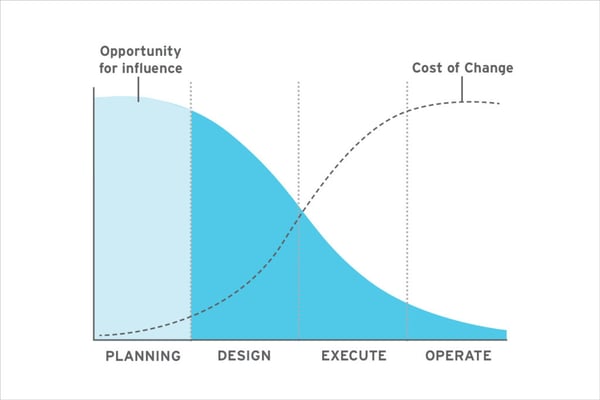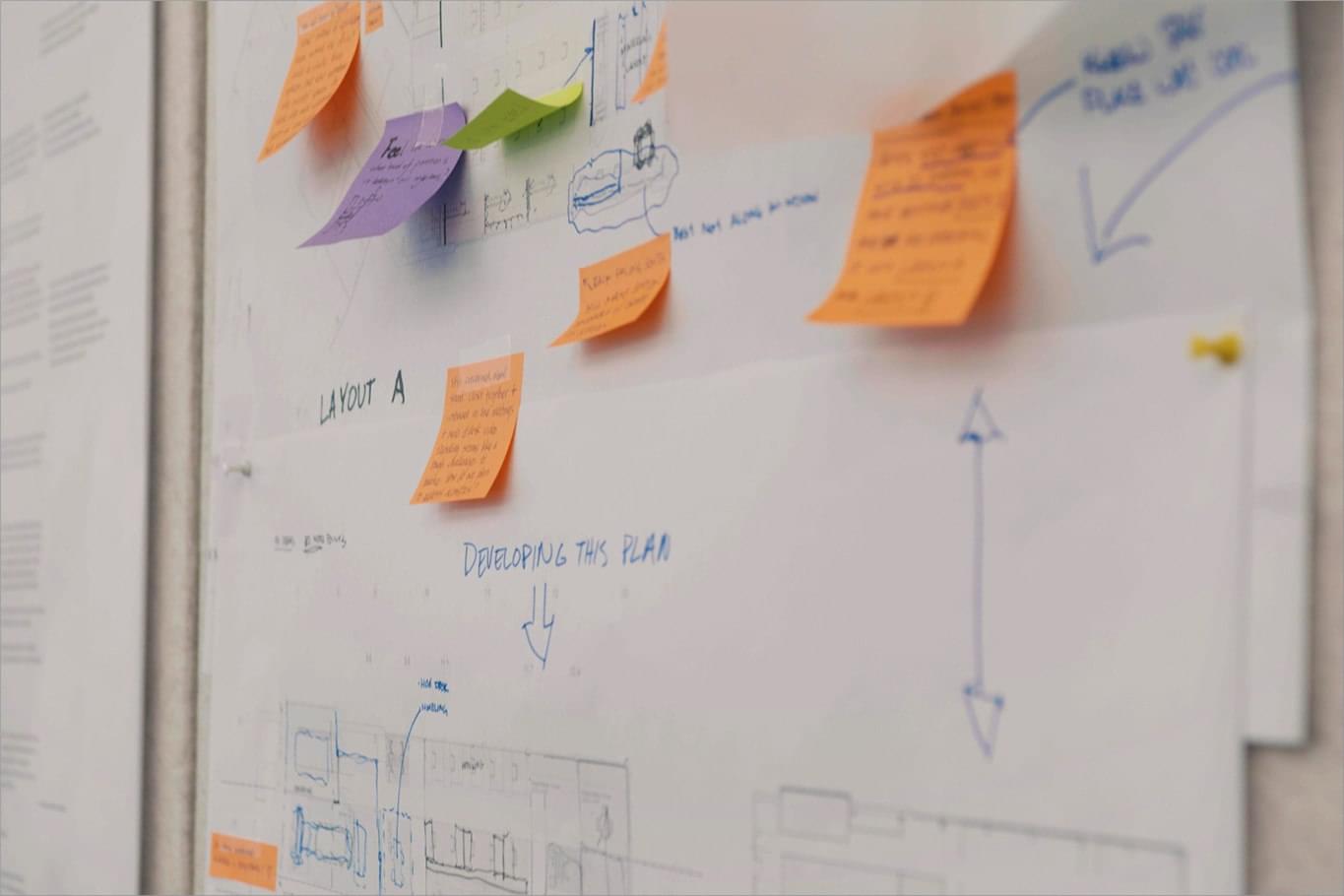The architectural process can last several months, and in that time, a lot can happen. Whether you experience a change in budget or operations, you may want to alter the design at some point.
Changes are an expected part of the design process. While some changes may fit your needs, others can increase the cost of your project.
Locking in design decisions early in the process is the most effective way to protect your budget. We call this idea the “80/20 rule.” 80% of the outcome is determined in the first 20% of the process.
In this article, you will learn about the 80/20 rule and why altering a design becomes more expensive and time-consuming the closer you get to construction. After reading, you’ll better understand how you and your architect can make the most out of the early stages of the process.
What is the 80/20 Rule?
The 80/20 rule is a maxim that applies to many fields. It means that 80% of results come from 20% of the effort. For example, 20% of a company’s products may represent 80% of its sales.
We use this rule to explain the importance of the earliest design phases. 80% of the outcome is determined in the first 20% of the design process. Early in the process, you outline goals, engage occupants, and determine needs.
You also make large-scale decisions related to sizing, massing, and layouts. At this point, the design is malleable, and no decisions are set-in-stone. This is the best time to explore ideas, test options, and make changes.

Changing a design becomes more expensive as the design process progresses.
Why Are Changes More Expensive Later in the Design Process?
As you progress through the design process, the design becomes (literally) more concrete. Changing the design becomes more difficult, time-consuming, and costly.
After establishing the building’s size, shape, and layout, your architect will start finalizing the design. In Design Development, you will select materials, equipment, and systems.
After finalizing these decisions, your architect will produce contract documents to explain the design intent to the contractor. If you make a change during this phase, your architect will need to rework the documents.
A seemingly small change like moving a wall can create a ripple effect. The architect may need to reroute ductwork and electrical conduits and coordinate these changes with the project’s consultants. This single change can have schedule and cost implications.
Changes are even more difficult during construction. A change may require your contractor to redo work and order new materials. The more complex the change, the greater the risk of miscoordination between trades and consultants.
Locking in design decisions before the contract documents phase prevents these situations. Protect your budget and schedule by taking the time to test options earlier in the process.
How Do You Reduce the Chance of Changes?
Your architect is there to guide you through the process and mitigate risk.
Pre-Design activities like visioning workshops, benchmarking tours, and programming studies help establish alignment with your team—reducing the chances of altering the design later in the process. Front-loading planning is the best way to manage risk.
Discussing your organization’s long-term goals with your architect also helps reduce risk. Throughout your building’s lifetime, your priorities will likely shift. Your organization may grow, and you may take on new operations.
Your architect can help you plan by finding design solutions that reduce the cost of changes down the line. Master planning services can help you anticipate future additions and renovations.
The decisions you make in the design process have long-term implications, but your architect can create a flexible and adaptive design.
Preparing for the Design Process
When you start your building project, remember the 80/20 rule. You should determine 80% of the outcome in the first 20% of the process. A collaborative and engaging design process helps protect your budget by preventing changes from occurring after your architect completes contract documents.
Be sure to talk with your architect about your long-term goals so they can lead you to the most cost-effective solutions.
Even with preparation, changes to the project’s scope may occur later. Some scope changes are beyond anyone’s control, especially if unexpected situations arise during construction.
A construction contingency helps protect your budget when these situations arise. Learn more by reading about the three types of building project contingencies.
